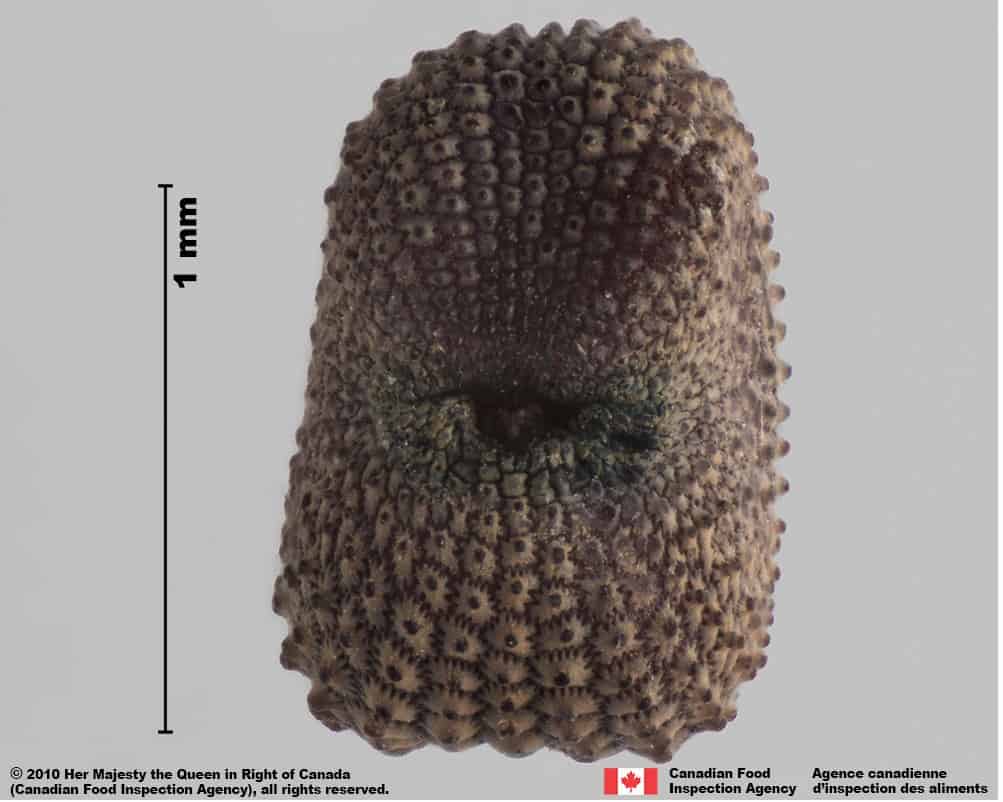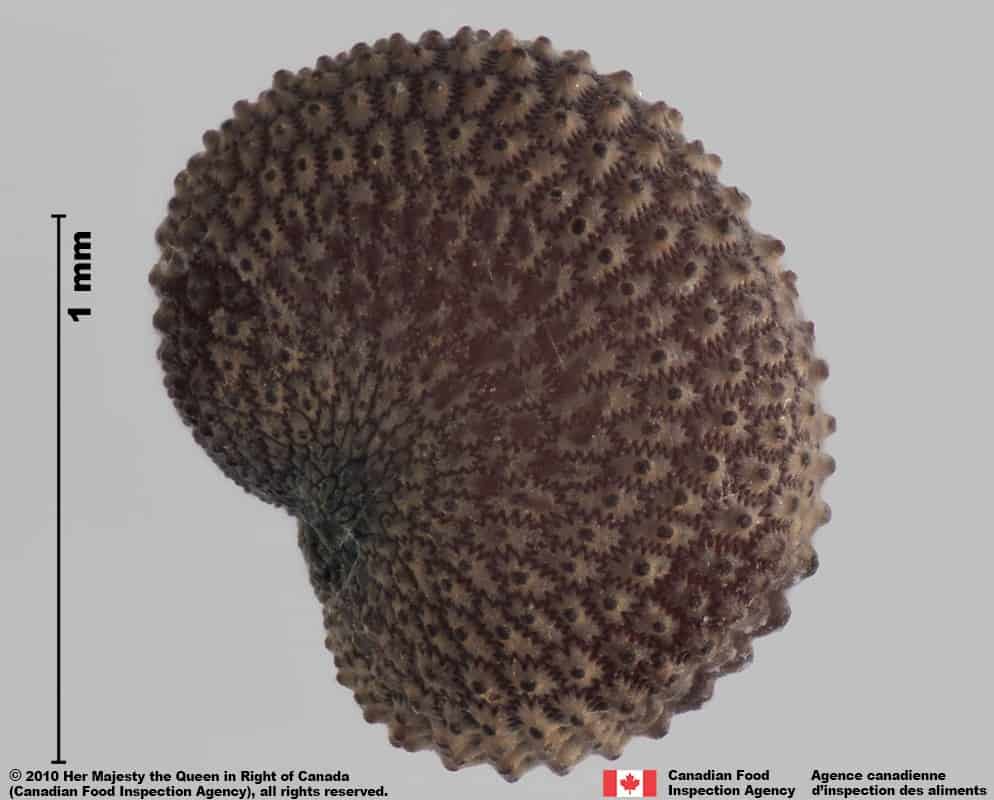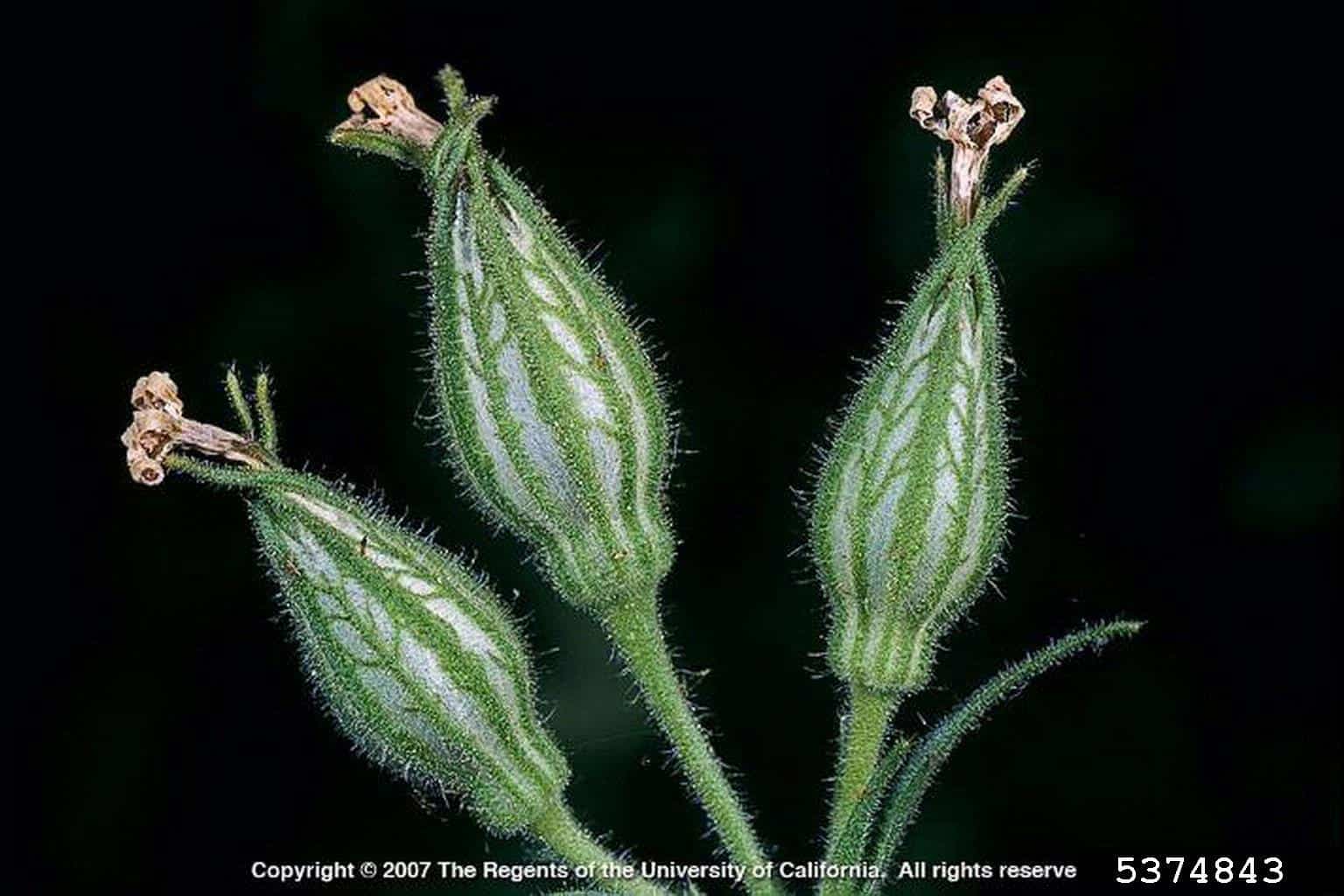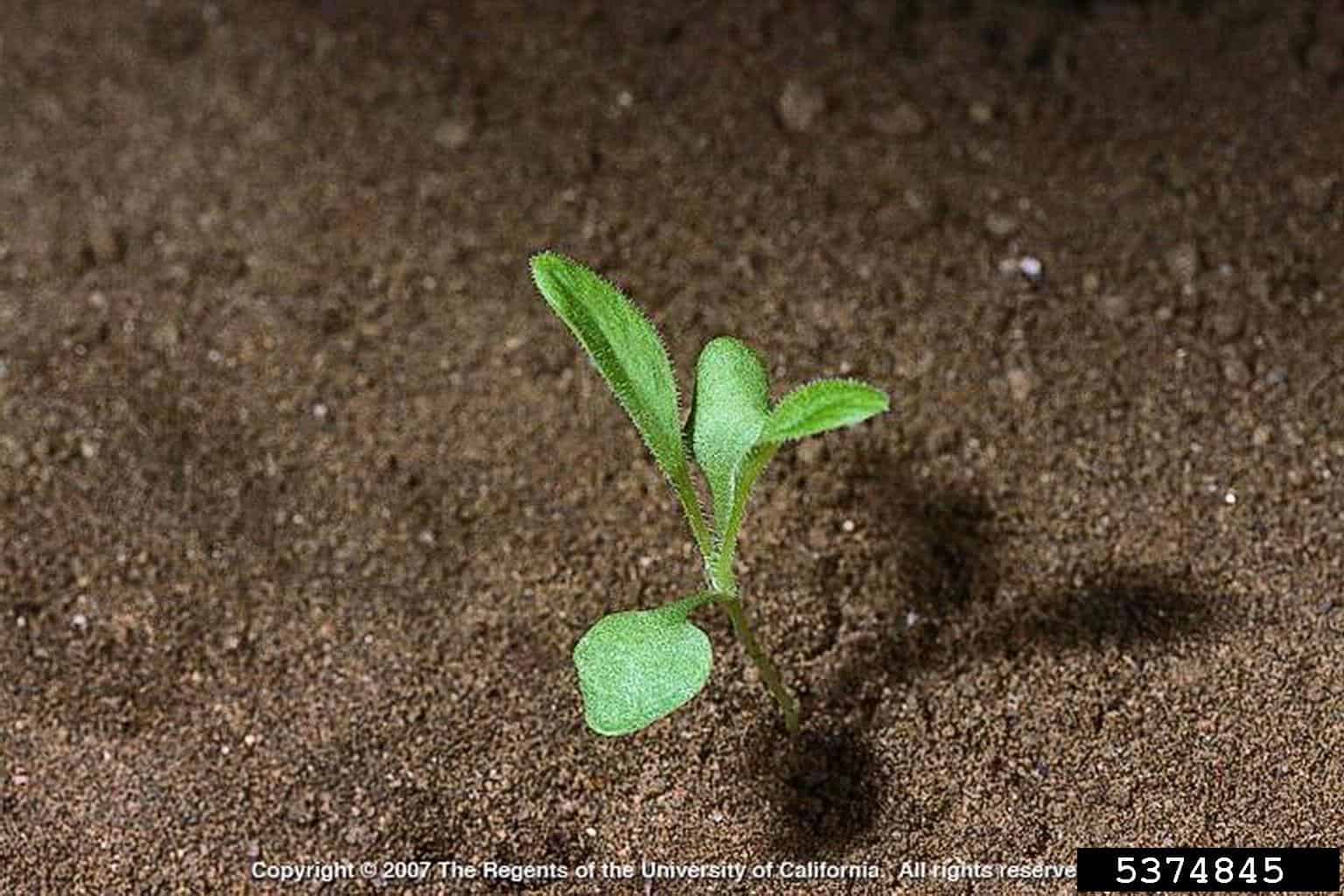Silene noctiflora
Overview
Aperçu
Regulation :
Remarques Réglementation:
- CFIA Weed Seeds Order - Class 3: Secondary Noxious Weed Seeds
- Quarantine lists of countries e.g. Mexico *may be updated without notice
Regulation Notes:
Distribution :
Répartition :
Native to parts of Europe and temperate Asia (USDA-ARS 2021). Naturalized in other parts of Europe, New Zealand, and North America (USDA-ARS 2021). In the United States, it is widespread but more common in northern states (USDA-NRCS 2021). Silene noctiflora occurs across Canada except for Nunavut and the Northwest Territories(Brouillet et al. 2010+).
Habitat and Crop Association :
Habitat et Cultures Associées :
Cultivated fields (especially leguminous crops), pastures, gardens, hayfields, old fields, railways, roadsides and disturbed areas (McNeill 1980; Frankton and Mulligan 1993; Darbyshire 2003).
Economic Use, cultivation area, and Weed Association :
Utilisation économique, zone de culture et association de mauvaises herbes :
Duration of Life Cycle :
Durée du cycle vital:
Annual
Dispersal Unit Type :
Type d’unité de dispersion :
Seed
General Information
RENSEIGNEMENTS GÉNÉRAUX
Silene noctiflora plants can produce up to 2500 seeds per plant. Seed from unopened capsules can germinate similarly to fully mature seed shed from the capsule (McNeill 1980). The small seed size makes it difficult to clean out of clovers such as Trifolium hybridum (alsike clover). Contaminated seed is the main method of spread for this species (McNeill 1980).
.
Silene noctiflora plant (Elizabeth Bella, AECOM, Bugwood.org)
Identification
Identification
-
Capsule
Size
- Capsule length: 15.0 – 24.0 mm; width: 10.0 mm (FNA 1993+)
Shape
- Capsule is egg-shaped
Surface Texture
- Surface is smooth
Colour
- Capsule is shiny straw yellow coloured
Other Features
- Capsule is shiny green when immature
- Capsule disperses the seeds from the narrow end, opening by 6 tooth-like valves (McNeill 1980)

Silene noctiflora (night-flowering catchfly) capsule

-
Seed
Size
- Seed length*: 0.9 – 1.3 mm; width: 0.8 – 1.1 mm
*Note: minimum and maximum of 20 seeds in a normal range of this species using image measurement (ISMA 2020)
Shape
- Seed D-shaped or kidney-shaped, compressed in edge view
Surface Texture
- Seed surface is stellate grooved reticulate with papillate tubercles in the interspaces
- Surface tubercles can appear in curved rows or randomly arranged
- The reticulation interspaces are generally rectangular shaped
Colour
- Seeds are dark red coloured, covered lightly in a dull yellow coating that obscures the surface
- Immature seeds are orange, red or reddish-brown coloured
Other Features
Hilum & Hilum area
- Hilum is in the middle along the straight edge of the seed
- Hilum is flanked by two small pads with grooved reticulation and square interspaces

Night-flowering catchfly (Silene noctiflora) seeds






-
Embryo
Size
- Embryo partially fills the seed
Shape
- Embryo is curved, in a peripheral position
Endosperm
- Endosperm is translucent white coloured
Identification Tips
CONSEILS POUR L’IDENTIFICATION
There are 700 species of Silene worldwide, and 70 occur in North America (FNA 1993+). The seeds of these species are generally D-shaped with stellate grooved reticulation and papillate tubercles. Five species with large seeds are commonly encountered as field weeds in temperate climates: S. dichotoma, S. dioica, S.latifolia, S. noctiflora and S. vulgaris. Seed features that distinguish these species include: shape, tubercle arrangement, colour and raised areas around the hilum.
S. dichotoma seed is generally wedge-shaped, compressed in edge view, long reticulation interspaces, yellowish or reddish colour with two curved pads flanking the hilum. S. dioica seeds are D-shaped, inflated in edge view, with pointed papillate tubercles in small interspaces. The surface is reddish coloured and the hilum is surrounded by a raised collar.
Seeds of S. latifolia are D-shaped, inflated in edge view, small reticulation interspaces, yellow or white coloured, with a raised collar around the hilum. S. noctiflora seed is D-shaped, compressed in edge view, long reticulation interspaces, reddish or yellow coloured with two small pads flanking the hilum. S. vulgaris seeds can be D- or wedge-shaped, compressed in edge view, with tubercles arranged in rows. The reticulation interspaces are a mix of square and rectangular shapes, grey, yellow or brownish coloured with two large pads flanking the hilum.

Night-flowering catchfly (Silene noctiflora) seed, hilum view






Additional Botany Information
AUTRES RENSEIGNEMENTS BOTANIQUES

Silene noctiflora flower (Joseph M. DiTomaso, University of California – Davis, Bugwood.org)




Similar Species
ESPÈCES SEMBLABLES
Similar species are based on a study of seed morphology of various species, and those with similar dispersal units are identified. The study is limited by physical specimen and literature availability at the time of examination, and possibly impacted by the subjectivity of the authors based on their knowledge and experience. Providing similar species information for seed identification is to make users aware of similarities that could possibly result in misidentification.
Silene latifolia Poir. (white cockle)
S. latifolia seed is generally larger (length*: 1.0 – 1.6; width: 0.9 – 1.3 mm), generally covered in a whitish coating, inflated shape in edge view with a large hilum opening. S. noctiflora seed may have a yellowish coating, not inflated in edge view with two small pads flanking the hilum.
Silene vulgaris (Moench) Garcke (bladder campion)
S. vulgaris seeds are generally larger (length*: 1.1 – 1.9 mm; width: 0.8 – 1.6 mm), tend to be a greyish colour, can be a wedge shape, has two large pads near the hilum with long rectangular cells and the surface tubercles are generally arranged in curved rows. S. noctiflora seed is reddish or with a yellowish coating, D-shaped or kidney-shaped, with smaller pads. The surface tubercles can be in rows or randomly arranged.
*Note: minimum and maximum of 10 seeds in a normal range of this species using image measurement (ISMA 2020)
Click to select species
Cliquez pour sélectionner les espèces

Silene vulgaris

Silene latifolia
Comparison Window
Fenêtre de comparaison
MAIN SPECIES
ESPÈCES PRINCIPALES
Silene noctiflora

Silene noctiflora
Caryophyllaceae
Night-flowering catchfly (Silene noctiflora) seeds
MAIN SPECIES
ESPÈCES PRINCIPALES
Silene noctiflora

Silene noctiflora
Caryophyllaceae
Night-flowering catchfly (Silene noctiflora) seeds
MAIN SPECIES
ESPÈCES PRINCIPALES
Silene noctiflora

Silene noctiflora
Caryophyllaceae
Night-flowering catchfly (Silene noctiflora) seed, hilum view
MAIN SPECIES
ESPÈCES PRINCIPALES
Silene noctiflora

Silene noctiflora
Caryophyllaceae
Night-flowering catchfly (Silene noctiflora) seed, side view
MAIN SPECIES
ESPÈCES PRINCIPALES
Silene noctiflora

Silene noctiflora
Caryophyllaceae
Night-flowering catchfly (Silene noctiflora) seed
MAIN SPECIES
ESPÈCES PRINCIPALES
Silene noctiflora

Silene noctiflora
Caryophyllaceae
Night-flowering catchfly (Silene noctiflora) seed, hilum (close-up view)
MAIN SPECIES
ESPÈCES PRINCIPALES
Silene noctiflora

Silene noctiflora
Caryophyllaceae
Silene noctiflora (night-flowering catchfly) capsule
SIMILAR SPECIES
ESPÈCES SEMBLABLES
Silene vulgaris

Silene vulgaris
Caryophyllaceae
Bladder campion (Silene vulgaris) seeds
SIMILAR SPECIES
ESPÈCES SEMBLABLES
Silene vulgaris

Silene vulgaris
Caryophyllaceae
Bladder campion (Silene vulgaris) seeds
SIMILAR SPECIES
ESPÈCES SEMBLABLES
Silene vulgaris

Silene vulgaris
Caryophyllaceae
Bladder campion (Silene vulgaris) seed, hilum view
SIMILAR SPECIES
ESPÈCES SEMBLABLES
Silene vulgaris

Silene vulgaris
Caryophyllaceae
Bladder campion (Silene vulgaris) seed
SIMILAR SPECIES
ESPÈCES SEMBLABLES
Silene vulgaris

Silene vulgaris
Caryophyllaceae
Bladder campion (Silene vulgaris) seed, profile
SIMILAR SPECIES
ESPÈCES SEMBLABLES
Silene vulgaris

Silene vulgaris
Caryophyllaceae
Bladder campion (Silene vulgaris subsp. vulgaris) seed, hilum (close-up view)
Need ID Help?
Besoin d’aide pour l’identification?
Reference(s)
Référence(s)
Brouillet, L., Coursol, F., Meades, S. J., Favreau, M., Anions, M., Bélisle, P. and Desmet, P. 2010+. VASCAN, the database of vascular plants of Canada. http://data.canadensys.net/vascan/ Accessed April 29, 2021.
Darbyshire, S. J. 2003. Inventory of Canadian Agricultural Weeds. Agriculture and Agri-Food Canada, Research Branch. Ottawa, ON.
Flora of North America (FNA) Editorial Committee, eds. 1993+. Flora of North America North of Mexico [Online]. 22+ vols. New York and Oxford. Accessed December 29, 2022.
Frankton, C. and Mulligan, G. A. 1993. Weeds of Canada. Agriculture Canada, Publication 948.
Global Biodiversity Information Facility (GBIF) Secretariat. 2022. https://doi.org/10.15468/39omei Accessed via https://www.gbif.org/species/5384834 Accessed December 29, 2022.
Government of Canada (GC). 2016. Canadian Weed Seeds Order. https://laws-lois.justice.gc.ca/eng/regulations/SOR-2016-93/page-2.html (English) https://laws-lois.justice.gc.ca/fra/reglements/DORS-2016-93/page-2.html (French)
Integrated Taxonomic Information System (ITIS). 2021. https://www.itis.gov/ Accessed April 29, 2021.
International Seed Morphology Association (ISMA). 2020. Method for Seed Size Measurement. Version 1.0. ISMA Publication Guide.
McNeill, J. 1980. The biology of Canadian weeds. 46. Silene noctiflora L.. Journal of Canadian Plant Science 60: 1243-1253.
U.S. Department of Agriculture-Agricultural Research Services (USDA-ARS). 2021. Germplasm Resources Information Network (GRIN), https://npgsweb.ars-grin.gov/gringlobal/taxon/taxonomysimple.aspx Accessed April 29, 2021.
U.S. Department of Agriculture-Natural Resources Conservation Service (USDA-NRCS). 2021. The PLANTS Database. National Plant Data Team, Greensboro, NC USA. http://plants.usda.gov Accessed April 29, 2021.




